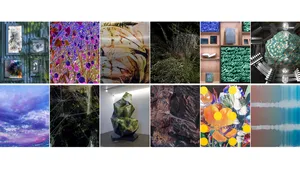Celebrating 15 Years of the Acropolis Museum

Classic art and architecture is synonymous with Greece. Renowned for its pursuit of perfection and harmonious proportions, it found its pinnacle in the Acropolis of Athens. More than 2,500 years ago this ancient citadel, perched atop a rocky hill, became a sanctuary for architectural and artistic masterpieces. The Parthenon, a temple dedicated to the goddess Athena, stands as the most iconic structure on the Acropolis, showcasing the Doric order's grandeur.
Today, the Acropolis Museum, a beacon of ancient history and cultural heritage, marks its 15th anniversary in collaboration with Google Arts & Culture to bring the wonders of the Acropolis to your fingertips, offering a captivating virtual journey through time.
Unearth the past: explore the newly inaugurated excavation area
Immerse yourself in the heart of ancient Athens as you explore the recently unveiled ancient city beneath the Acropolis Museum. For the first time, enjoy navigating through this ancient city using Street View by wandering through the remains of these building remains and uncover the hidden stories of the people who once lived and worked in the shadow of the Acropolis. Then, continue your virtual journey by exploring the rest of the museum above.
Newly open excavation area of the Acropolis Museum
Parthenon: West pediment. Kekrops and Pandrosos (5th century BC)
The Persian or Scythian Rider (5th century BC)
Marble bust (3rd century BC)
The "Lyon Kore" (6th century BC)
Through the publication of over 200 high resolution images, you can study up close the intricate details of the Parthenon marbles, such as the frieze depicting the Panathenaic procession. You can marvel at Phidias' craftsmanship and learn about elements of unique cultural interest such as The Magic Sphere, a ceremonial object for the worship of Helios.
The Acropolis Museum's treasures on Google Arts & Culture are available on the web and in the app (iOS/Android).






